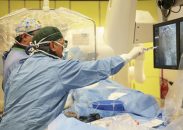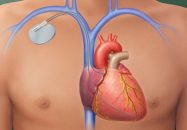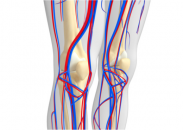This analysis reports (for the first time in the literature) that after the endovascular aortic aneurysm repair (EVAR) in octogenarians, survival rate is the same as that of their healthy counterparts. This is true provided the procedure does not present complications. If any, mortality results twice as high in this group. Using propensity score, researchers…
ACC Recommendations against the New Coronavirus
The American College of Cardiology (ACC) has launched a document summarizing the potential implications of the new coronavirus identified in Wuhan, China. This new virus has been called COVID-19 by the WHO. According to the WHO reports, there are around 93000 confirmed cases across the world, and around 12600 are outside China. In Latin America,…
What to Do and What Not to Do in Case of PE According to the New European Guidelines
As a “friendly,” easy-to-read document, the new European guidelines on pulmonary embolism (PE) include an excellent summary chart with new and modified items (compared with the 2014 guidelines), and also some sort of final conclusion composed of crucial tips and contraindications that come in handy in case of emergency. Diagnosis stage In suspected high-risk PE,…
New European Guidelines on the Management of Lower Limb Acute Ischemia
Clinical practice guidelines are usually tedious and, frankly, while a lot of people make an enormous effort to write them, they are ultimately read in full by just a few. These new European Guidelines on the Management of Lower Limb Acute Ischemia represent a special team effort, since they include physicians, cardiologists, surgeons, and interventionists,…
Felling Reassured with Paclitaxel Coated Devices in Peripheral Artery Disease
This big analysis shows rapid absorption of paclitaxel coated devices for PCI in femoropopliteal territory, which reassures us about its alleged association to increased mortality. In fact, survival, amputation-free survival and cardiovascular events rate resulted better with paclitaxel coated devices in the treatment of chronic limb ischemia. This study emphasizes the difference that might exist…
Drug-Coated Balloons vs. Conventional Angioplasty Below the Knee
This meta-analysis is an update on the role of drug-coated balloons in the treatment of infrapopliteal arterial disease, a difficult pathology for all strategies. The primary endpoint of this meta-analysis was treated lower limb salvage at 12 months. The secondary endpoints included survival at 12 months, amputation free survival, restenosis, and target lesion repeat revascularization rate. This…
Crest-2 Registry: Carotid PCI Presents Low Rates of Death and Stroke
Courtesy of Dr. Carlos Fava. In modern studies, carotid artery stenting (CAS) has been shown equal to surgery in terms of the composite end point of periprocedural stroke, death, acute myocardial infarction and late ipsilateral stroke. This was tested in different groups and by trained operators. In the CREST-2 Registry (C2R) 2141 patients were included,…
Angioplasty in Long Femoropopliteal Lesions Offers Reasonable Results
Courtesy of Dr. Carlos Fava. Around half the treated lesions in peripheral disease are femoropopliteal lesions. Long lesions are among the challenges faced: they are associated with higher mortality and morbidity, and revascularization in that setting always entails some degree of difficulty. Nowadays, with the development of nitinol stents and more operator experience, angioplasty is becoming…
Medical vs. Endovascular Treatment in Uncomplicated Type B Aortic Dissection
Under much debate, the treatment of uncomplicated type B aortic dissection is still uncertain. Several studies with methodological limitations have shown that endovascular treatment plus optimal medical treatment might be beneficial, compared with medical treatment alone. This meta-analysis sought to define more clearly the treatment strategy in patients with acute and subacute uncomplicated type B…
We Should Indicate More than 6 Months of DAPT in Lower Limb Disease
Courtesy of Dr. Carlos Fava. Advanced peripheral vascular disease is frequently associated with cardiovascular events and amputation. It has been proven that mono-antiplatelet therapy (MAPT) offers some benefit (with either aspirin or clopidogrel), but there are scarce data on the role of dual antiplatelet therapy (DAPT) in these patients. Researchers analyzed 404 patients who received MAPT for…
Consensus on How to Conduct Follow-Up in Peripheral Vascular Disease
Peripheral vascular disease involves multiple areas and, therefore, can have very different presentations (from complete lack of symptoms to disabling symptoms). Depending on clinical presentation, general condition, anatomical localization, and lesion extension, revascularization can be indicated alongside optimal medical treatment. In 2017, guidelines with indications for revascularization were published; however, maintaining long-term patency can be…










